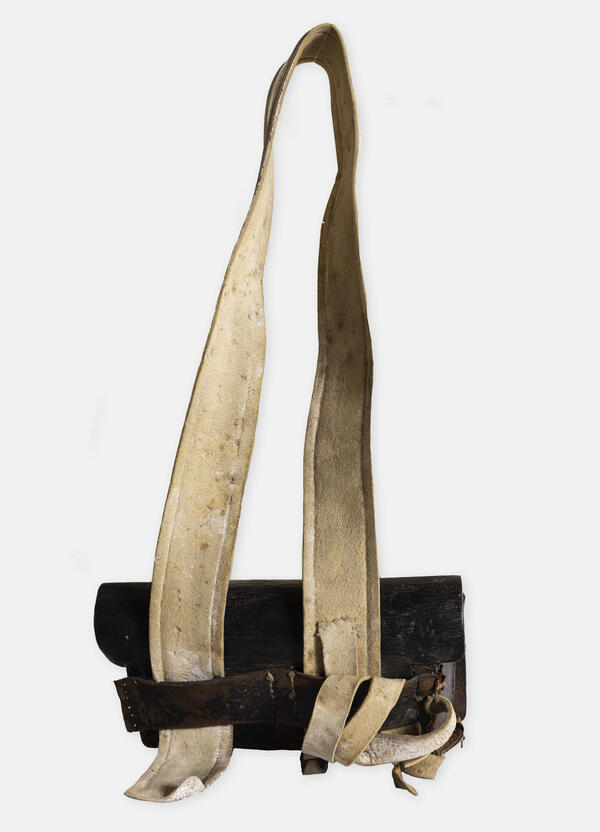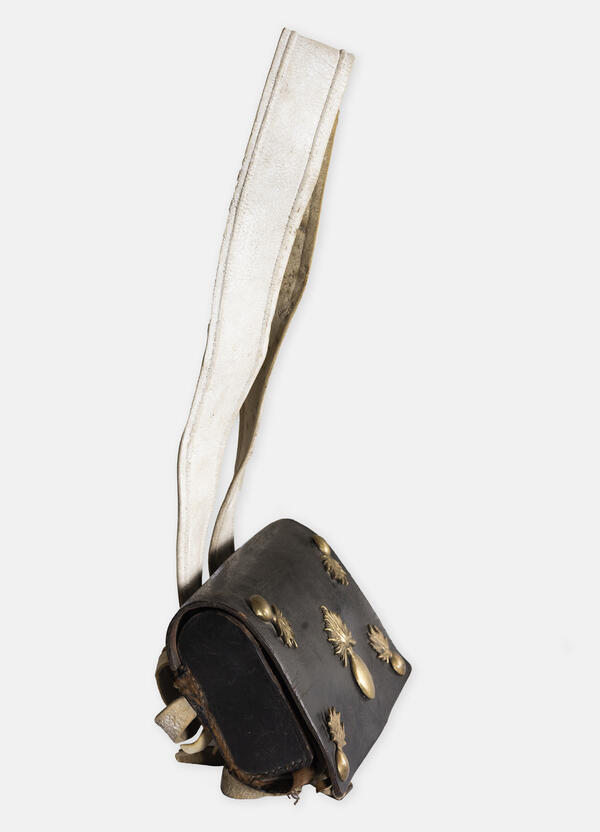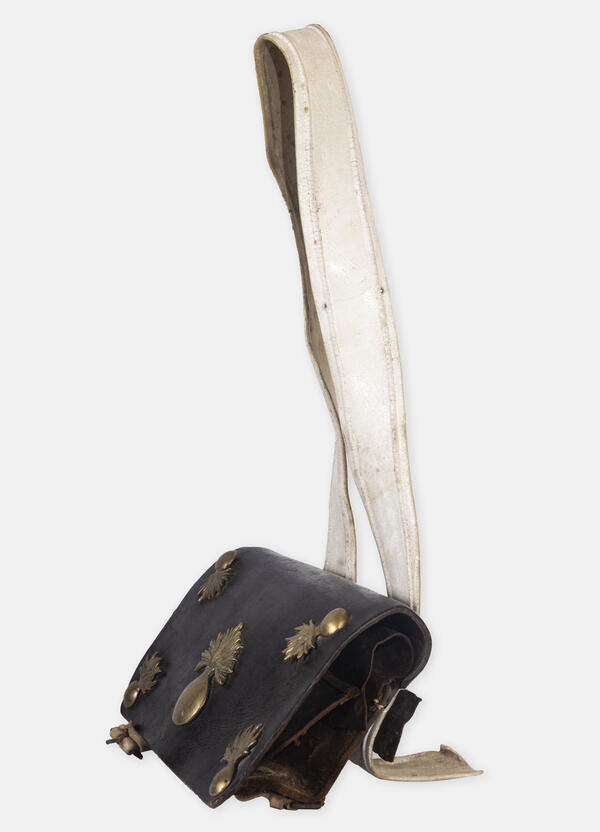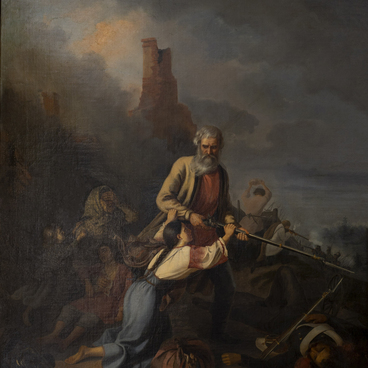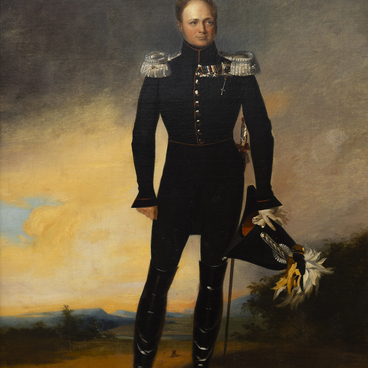The museum’s collection includes several cartridge bags of the French and Russian armies. It is established that the presented bag belonged to the lower ranks of the French grenadier regiments. The inner lid, as well as the pocket for flints and tools, were made of thin light brown leather.
The craftsman attached two whitened leather straps with metal buckles from the bottom and a leather strap from the inside of the lid. Outside, in the center and in the corners, he decorated the lid of the cartridge bag with flaming brass grenades. In addition, the bag has a sling of thick bleached leather.
For both the French and Russian armies during the Napoleonic Wars, such cartridge bags were an obligatory addition to the uniforms of the lower ranks of infantry. Usually, one bag could hold about 60 rounds.
The images of flaming grenades helped to determine that this bag belonged to the grenadier units. This military branch appeared in European armies, primarily in the English and French armed forces, in the second half of the 17th century, and in Russia — in the early 18th century as a result of Peter I’s reforms.
Initially, a grenadier attack consisted of throwing hand grenades while moving ahead of the advancing infantry columns. This was determined by the war tactics characteristic of the 18th century. The physical strength and agility required for this task quickly made the grenadiers elite units.
Later, tactics changed, and by the end of the 18th century, grenades became purely artillery ammunition. Hand grenades were not used in the battles of 1812. However, the designation “grenadiers” in both the Russian and French armies during this period was given to the most elite and well-trained units of heavy line infantry. In some cases, they retained individual elements of the original uniform, such as, for example, the image of grenades on this bag.
In the 19th century, like other soldiers of heavy infantry, grenadiers carried rifles with bayonets, ammunition for which was stored in similar cartridge bags. In the modern-day French army, the image of a flaming grenade, similar to the ones on this exhibit, still serves as an element of the uniforms of elite infantry units.
